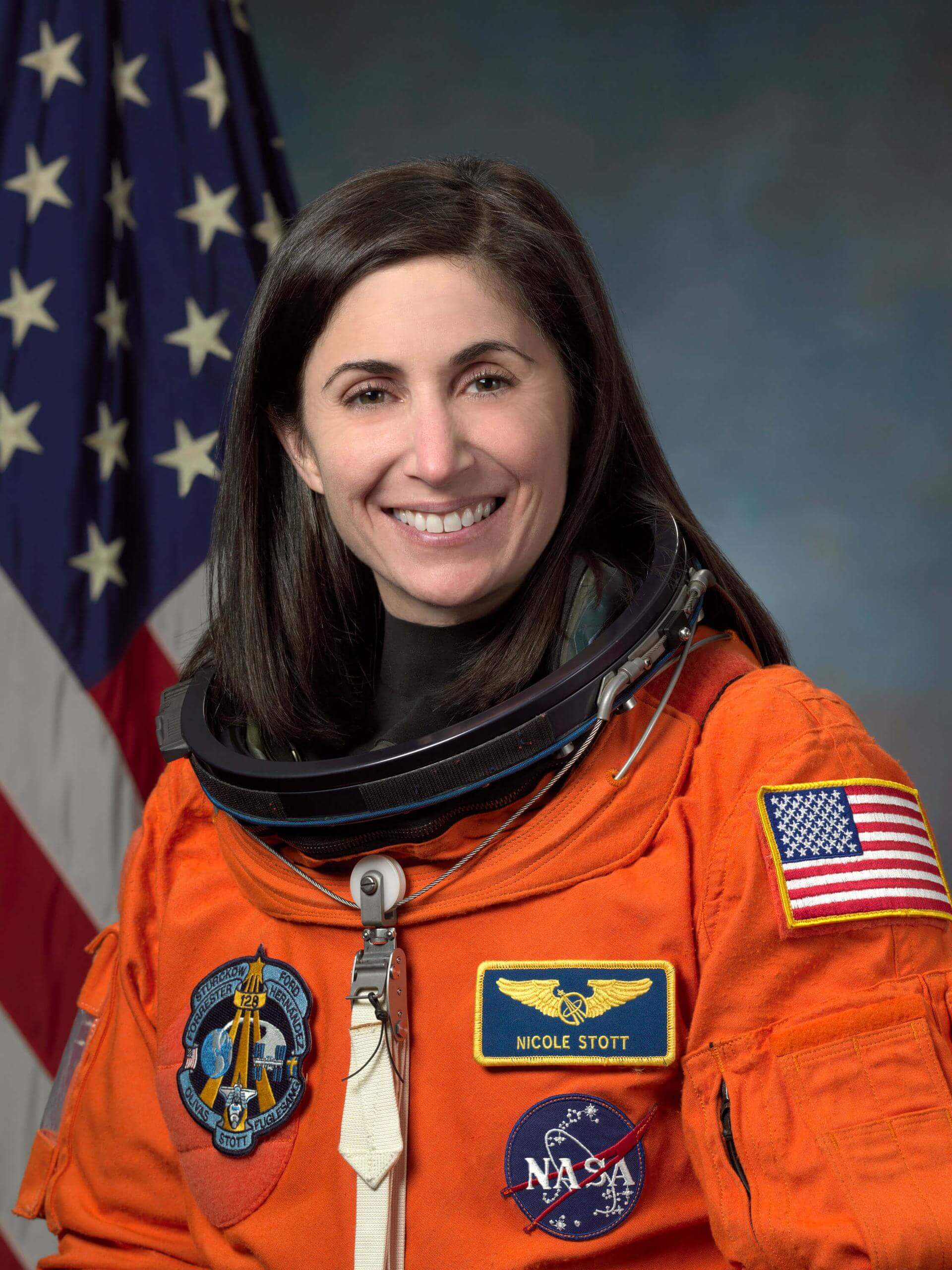Nicole Stott
American - (NASA)
Retired
Date of Birth: Nov. 19, 1962
Age: 63
Nicole Marie Passonno Stott is an American engineer and a NASA astronaut. She served as a Flight Engineer on ISS Expedition 20 and Expedition 21 and was a Mission Specialist on STS-128 and STS-133. After 27 years of working at NASA, the space agency announced her retirement effective June 1, 2015.
Space Shuttle Discovery / OV-103 | STS-128
National Aeronautics and Space Administration | United States of AmericaKennedy Space Center, FL, USA
Aug. 29, 2009, 3:59 a.m.
Status: Success
Mission:
STS-128 (ISS assembly flight 17A) was a NASA Space Shuttle mission to the International Space Station (ISS) that launched on 28 August 2009. Space Shuttle Discovery carried the Multi-Purpose Logistics Module Leonardo as its primary payload. Leonardo contained a collection of experiments for studying the physics and chemistry of microgravity. Three spacewalks were carried out during the mission, which removed and replaced a materials processing experiment outside ESA's Columbus module, and returned an empty ammonia tank assembly.
Low Earth OrbitSpace Shuttle Atlantis / OV-104 | STS-129
National Aeronautics and Space Administration | United States of AmericaKennedy Space Center, FL, USA
Nov. 16, 2009, 7:28 p.m.
Status: Success
Mission:
STS-129 (ISS assembly flight ULF3) was a NASA Space Shuttle mission to the International Space Station (ISS) flown by Atlantis. STS-129 focused on staging spare components outside the station. The 11-day flight included three spacewalks. The payload bay carried two large ExPRESS Logistics Carriers holding two spare gyroscopes, two nitrogen tank assemblies, two pump modules, an ammonia tank assembly, a spare latching end effector for the station's robotic arm, a spare trailing umbilical system for the Mobile Transporter, and a high-pressure gas tank. STS-129 was the first flight of an ExPRESS Logistics Carrier.
Low Earth OrbitSpace Shuttle Discovery / OV-103 | STS-133
National Aeronautics and Space Administration | United States of AmericaKennedy Space Center, FL, USA
Feb. 24, 2011, 9:53 p.m.
Status: Success
Mission:
STS-133 was an ISS assembly flight. Payload included the Permanent Multipurpose Module Leonardo, which was left permanently docked to one of the station's ports. The shuttle also carried the third of four ExPRESS Logistics Carriers to the ISS, as well as a humanoid robot called Robonaut.
Low Earth OrbitThe National Aeronautics and Space Administration is an independent agency of the executive branch of the United States federal government responsible for the civilian space program, as well as aeronautics and aerospace research. NASA have many launch facilities but most are inactive. The most commonly used pad will be LC-39B at Kennedy Space Center in Florida.
Long March 3B/E
Fengyun-4C
Launch Complex 2 (LC-2) - Xichang Satellite Launch Center, People's Republic of ChinaChina's geostationary meteorological satellite program FY-4 (Feng Yun 4) is the second generation of chinese geostationary meteorological satellites.
Long March 8A
SatNet LEO Group 17
Commercial LC-1 - Wenchang Space Launch Site, People's Republic of ChinaA batch of 9 Low Earth Orbit communication satellites for the Chinese state owned SatNet constellation operated by the China Satellite Network Group.…
Soyuz 2.1a
Obzor-R No.1
43/4 (43R) - Plesetsk Cosmodrome, Russian FederationNote: Assignment of payloads to this launch is uncertain. The Russian Obzor-R satellite is a planned X-band radar earth observation satellite desi…
LVM-3 (GSLV Mk III)
BlueBird Block 2 #1
Satish Dhawan Space Centre Second Launch Pad - Satish Dhawan Space Centre, IndiaAST SpaceMobile’s Block 2 BlueBird satellites are designed to deliver up to 10 times the bandwidth capacity of the BlueBird Block 1 satellites, requi…
Long March 12A
Demo Flight
Long March 12A Pad - Jiuquan Satellite Launch Center, People's Republic of ChinaFirst test launch of CASC/SAST’s Long March 12A rocket, with a dummy payload. The rocket’s 1st stage attempted to land on a landing pad about 300 km …



